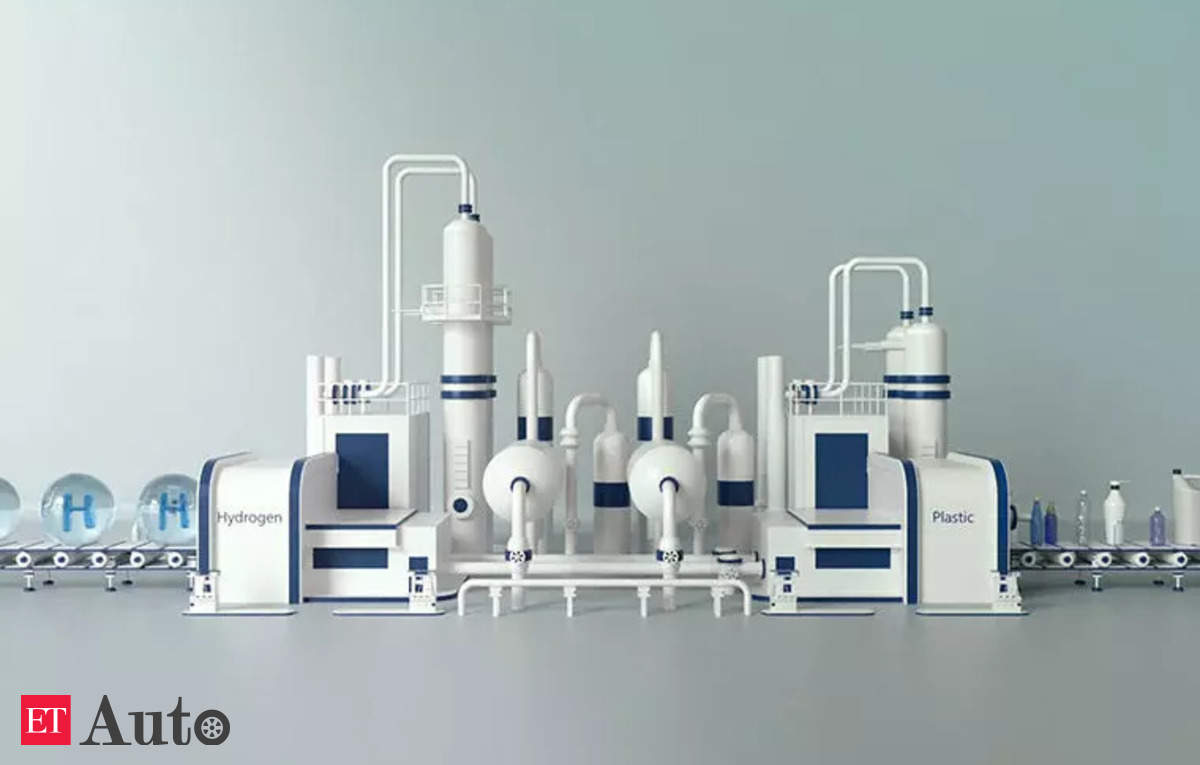Hyundai Motor Company is showcasing future technologies from across Hyundai Motor Group (the Group) at CES 2024 in Las Vegas from January 9–12. Under the theme ‘Ease every way,’ the company presents a redefinition of its role in creating a more comfortable everyday life, focusing beyond mobility to innovate a human-centered life through the completion of a hydrogen energy ecosystem and a shift toward software-driven approaches.
Hyundai Motor’s exhibition at this year’s CES, in the West Hall of the Las Vegas Convention Center (LVCC), is three times larger than its display at CES 2022, spanning an area of around 21,600 sq. ft. It showcases exhibits demonstrating hydrogen and ‘software-defined vehicle’ (SDV) and artificial intelligence (AI)-related technologies that aim to realize a safe and free future for society.
Through this exhibition, Hyundai Motor aims to offer customers an experiential journey into the human-centered future vision through the introduction of key demonstrative technologies in hydrogen and software, alongside future mobility concepts, the company said in a media release.
Transition to a hydrogen society: In 2021, Hyundai Motor committed to achieving carbon neutrality by 2045 and continues to make efforts to reduce carbon in all areas of the value chain.
At the CES 2024, Hyundai Motor announced that it would expand HTWO, its existing fuel cell brand, into the Group’s hydrogen value chain business brand, and announced a ‘HTWO Grid’ solution that will accelerate the transition to a hydrogen society.
HTWO harnesses the capabilities of each affiliate within the Group to offer an optimized, customized package that integrates unit solutions (‘Grid’) to meet the diverse environmental characteristics and needs of customers at every stage of hydrogen production, storage, transportation and utilization.
At CES, Hyundai Motor is displaying a media table that can examine the technologies that will be applied at each stage of the value chain and showcase the company’s future direction that will speed up the transition to a hydrogen society.
Visitors can also learn about green hydrogen that is produced by electrolyzing water. Electrolysis plants operate on renewable energy sources, such as wind, solar and hydropower. As green hydrogen is produced by a carbon-free energy source, it neither emits polluting gases during combustion nor production, gaining attention as the ultimate clean energy source of the future.
Hyundai E&C and Hyundai Engineering are participating in the construction of electrolysis-based green hydrogen production facilities in Buan and Boryeong, South Korea, respectively.
Regarding hydrogen storage and transportation, booth visitors can learn about a hydrogen logistics business process established by Hyundai Glovis and the ammonia carrier, one of the methods of transporting hydrogen.
The flow of hydrogen transportation and distribution can be divided into four stages: production, shipping, transportation and consumption. After production, hydrogen undergoes processing for distribution, is injected into tube trailers after high-temperature compression and is then shipped to various locations worldwide.
Hyundai Motor’s XCIENT Fuel Cell is the world’s first mass-produced fuel cell Class 8 heavy-duty truck. It has been recognized for its eco-friendliness and excellent technological prowess in major global markets, such as Switzerland and Germany. Furthermore, the company has successfully launched tractor models specifically designed for the North American market.
Hyundai Motor continues to strengthen its collaborations with partners, including global e-commerce players in the fields of green logistics transformation. The company is committed to providing optimized hydrogen mobility solutions, building on the foundation of its hydrogen fuel cell trucks.
Shift to software-defined everything: At CES 2024, Hyundai Motor showcases exhibits and videos introducing core ‘software-defined vehicle’ (SDV) technologies under development by the Group’s global software center, 42dot, emphasizing the importance of software (SW) and AI in becoming a smart mobility solutions provider.
Hyundai Motor aims to redefine everything from vehicles to all surrounding environments with SW and AI, promoting the expansion from SDV to SDx (‘Software-defined Everything’). Its CES exhibit highlights the Group’s current practical software-defined mobility services alongside technologies fostering the extension of SDx.
The SDV Electrical/Electronic (E/E) Architecture represents the core hardware structure of SDV, showcasing the operational framework and functional structure where the vehicle’s cameras, radars and sensors gather driving environment data, enabling autonomous driving through the integrated controller, a High-Performance Vehicle Computer (HPVC) embedded within the vehicle. This exhibit illustrates how the vehicle’s hardware structure gets simplified through the transition toward SDV, providing a more intuitive view.
Based on driving scenes in Pangyo, South Korea played on the display in the front of the exhibit, actual road scenarios, such as left and right turns, are staged to illustrate the data flow where the HPVC and zone controllers for autonomous driving are activated according to the road environment. This flow is visualized through LED lights. Moreover, it’s possible to observe the operation of a ‘fault-tolerant’ function within SDV safety features, where even if one controller malfunctions, another controller takes over to ensure safe driving.
The HPVC exhibited alongside the SDV architecture serves as the integrated hardware consolidating core SDV technologies. It controls all other controllers within the SDV, functioning as the brain of the SDV, enabling the application of software technologies in the vehicle. The HPVC aids in driving assistance and acts as a gateway between data generated within the vehicle, facilitating the application of software technologies in the vehicle. It plays a significant role, vastly enhancing the vehicle’s performance, safety and convenience.
The five core technologies introduced through the videos include:
·HPVC and SDV OS: A modern data center-like network architecture and fault-tolerant system for SDVs.
·Data-Driven Learning Systems: Continuous integration and deployment of autonomous driving from R&D to commercial robo-taxi service through MLOps and DataOps.
·Safety-Designed Vehicle: Technology for cybersecurity and safe driving control.
·LLM for Advanced Mobility: Conversational AI assistant that enhances human-like interaction between SDVs and drivers/passengers.
·Self-Managed Smart City: SDV technologies extending beyond vehicles into the city.





